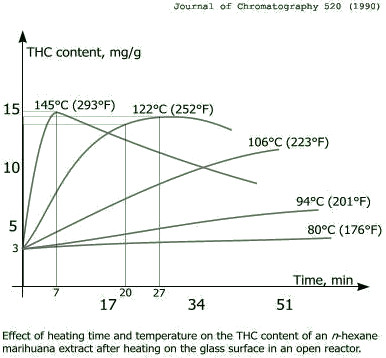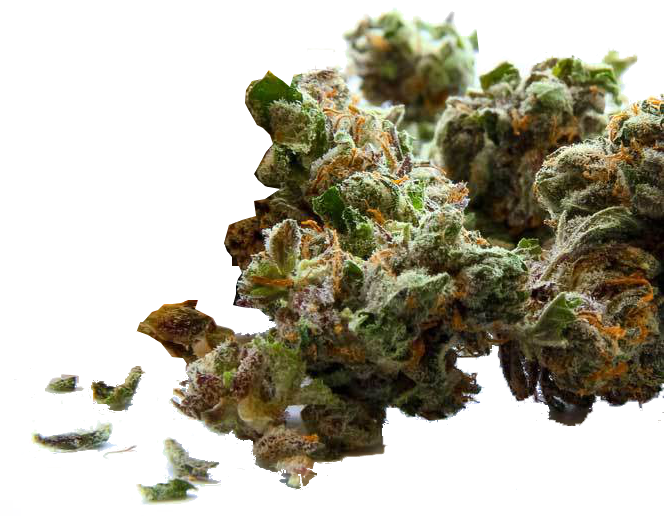Lifestyle & Culture, Recipes
Decarboxa What?! Decarboxylating Marijuana 101 & Bonus Recipes
So you researched and researched until you finally found the perfect cannabis recipe and you’re now seeing one of the first steps is to decarboxylate your bud. Decarboxylate may be a new word to some but fact is just about every marijuana consumer has decarboxylated cannabis before and is capable of doing it again… quite easily. Let’s first start with what decarboxylation actually is – a chemical reaction that removes a carboxyl group and releases carbon dioxide (CO2). Ok, I know that didn’t help much yet but hang on there’s more…
Now let’s talk about sweet, sweet marijuana. Most of us have heard that THC (tetrahydrocannabinol) is a cannabinoid found in marijuana however this is partly untrue. It’s actually THCA (tetrahydrocannabinol acid) that’s present in the bud when it’s picked from the plant and THCA itself just isn’t enough to produce the same benefits associated with THC. In order to get THC from THCA we must produce a chemical reaction that will remove the carboxyl group and release a CO2 molecule resulting in the conversion of THCA into our prized THC and other cannabinoids. How do we do this? Well most of us already do it with heat.
Every time you pack a bowl, roll something up, vape/dab an extract, eat an edible, etc its heat that makes all the magic possible. Smoking weed will cause you to feel its effects because applying heat to it removes the carboxyl group, releases CO2 and converts the existing THCA into THC and its other cannabinoids. Same with creating own e juice or baking your own space cake – heat is almost always used in these processes. When decarboxylating THCA the recommended temperature is 250° and cooking times will vary based on your recipe. For example if you just want to decarb bud by itself you can accomplish this in about 30 minutes but if the goal is to whip up some cannabutter, homemade oil or e juice then you’ll generally want to use slightly higher temperatures and longer heating times to allow all the ingredients to incorporate properly. Keep in mind you don’t ever want to exceed 280° because higher temperatures can damage your THC. If you begin to approach this mark just open the oven door and even turn it off if necessary until you’re back at a safe temperature. Here’s a chart illustrating varying results at different temperatures and durations.

Even though heat is the fastest, most common way to decarboxylate it’s not the only way. Heat can definitely speed things up but faster isn’t always better and decarboxylating ganja is a perfect example of this. While heat will produce desired effects time and time again many will argue that heatless decarboxylating is the better option. Heatless decarboxylation can take months to complete so it’s not exactly for impatient people or time sensitive needs but it’s still 100% possible and here’s how to do it. The most common heatless method of decaboxylation is with the use of a high-proof grain liquor. Everclear will work fine and some have even had success with Bacardi 151. They’re both commonly found where spirits are sold and most stores will even special order for you if they don’t currently have any in stock. You can also use mixtures of vegetable glycerin (VG) and propylene glycol (PG), the 2 most common solvents for vape juice and e liquids. And arguably, citric acid can be used to decarboxylate THCA without heat as well. Some have even said it works overnight but if you’ve ever read about this method anywhere you would find there’s a lot of debate and controversy over its effectiveness. Please let us know your results if you ever give citric acid a try.
So now we know the definition of decarboxylation, why it’s important and how we accomplish it. How about some quick recipes?
Bonus Decarboxylation Recipes
Oven/Toaster Oven Decarb Recipe
- Preheat oven/toaster oven to 250°. Use an actual thermometer for this. The thermostat on your oven/toaster oven is typically not as precise.
- Line a cooking sheet with aluminum foil and spread your bud evenly across it. It doesn’t have to be finely ground but it shouldn’t be large bulky nugs either.
- Cover tightly with another piece of aluminum foil.
- Place in the oven/toaster oven for 30 min – This will cause a very strong odor. I happen to enjoy it but be sure to do this in an area where odor is acceptable.
- Remove and let cool for another 5 min.
- That’s it, your bud is decarbed and can be incorporated into recipes now.
Heatless Decarb Recipe
- Get a spill proof storage container large enough to accommodate your bud. Mason jars work great.
- Fill with bud. It doesn’t have to be finely ground but it shouldn’t be large bulky nugs either.
- Fill jar with enough Everclear to submerge all the bud.
- Store the jar in a cool dry place and shake well 2 x daily for 90 days.
- At the end of 90 days strain the mixture through a cheese cloth or coffee filter and you end up with a very potent tincture. You can drop it sublingually or add it to another recipe.
I also highly recommend the following recipes:


Does just soaking in ethanol decarb? It extracts but does not decarb. The extract is THCA if the herb isn’t decarbed first.